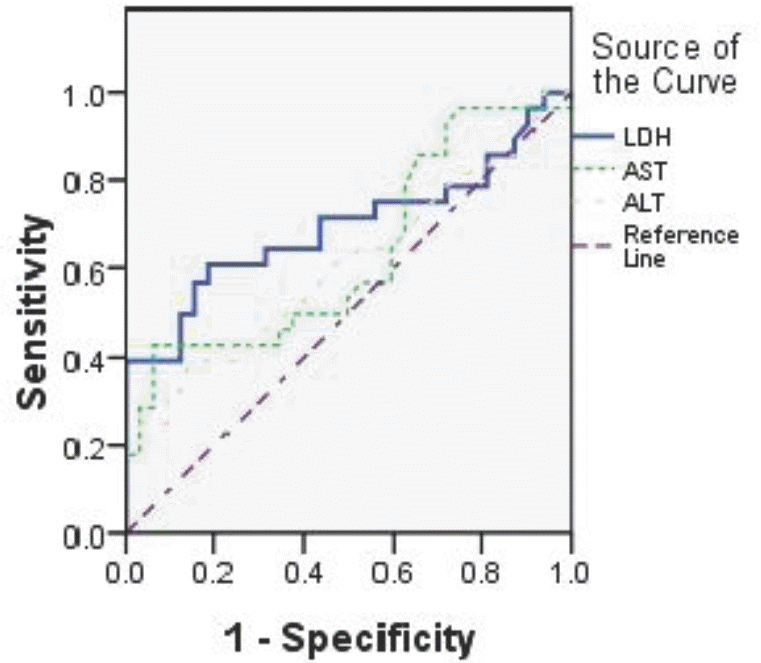1. Lindenskov PH, Castellheim A, Saugstad OD, Mollnes TE. Meconium aspiration syndrome: possible pathophysiological mechanisms and future potential therapies. Neonatology. 2015; 107:225–30.

2. Karabayir N, Demirel A, Bayramoglu E. Blood lactate level and meconium aspiration syndrome. Arch Gynecol Obstet. 2015; 291:849–53.

3. Bhat RY, Rao A. Meconium-stained amniotic fluid and meconium aspiration syndrome: a prospective study. Ann Trop Paediatr. 2008; 28:199–203.

4. Cleary GM, Wiswell TE. Meconium-stained amniotic fluid and the meconium aspiration syndrome. An update. Pediatr Clin North Am. 1998; 45:511–29.
5. Choi CW, Kim BI, Lee HJ, Joung KE, Shim GH, Lim IS, et al. Clinical characteristics of severe meconium aspiration syndrome. Korean J Pediatr. 2008; 51:713–21.

6. Lee EC, Choi MG, Shim GH, Song YH, Chey MJ. Comorbid risk factors of persistent pulmonary hypertension of the newborn in infants with meconium aspiration syndrome. Neonatal Med. 2014; 21:166–71.

7. Hsieh TK, Su BH, Chen AC, Lin TW, Tsai CH, Lin HC. Risk factors of meconium aspiration syndrome developing into persistent pulmonary hypertension of newborn. Acta Paediatr Taiwan. 2004; 45:203–7.
8. Ozkiraz S, Gokmen Z, Boke SB, Kilicdag H, Ozel D, Sert A. Lactate and lactate dehydrogenase in predicting the severity of transient tachypnea of the newborn. J Matern Fetal Neonatal Med. 2013; 26:1245–8.

9. Lackmann GM. Influence of neonatal idiopathic respiratory distress syndrome on serum enzyme activities in premature healthy and asphyxiated newborns. Am J Perinatol. 1996; 13:329–34.

10. An YS, Kim IU, Yang MY, Jeong HR, Kim HS. Serum enzymes in predicting transient tachypnea of newborn and respiratory distress syndrome. Korean J Perinatol. 2014; 25:284–91.

11. Dargaville PA, Copnell B. The epidemiology of meconium aspiration syndrome: incidence, risk factors, therapies, and outcome. Pediatrics. 2006; 117:1712–21.

12. Park MK, Pediatric cardiology for practitioners. 5th ed ed. St. Louis: Mosby;2008. p. p299–302.
13. Karlsson M, Wiberg-Itzel E, Chakkarapani E, Blennow M, Winbladh B, Thoresen M. Lactate dehydrogenase predicts hypoxic ischaemic encephalopathy in newborn infants: a preliminary study. Acta Paediatr. 2010; 99:1139–44.

14. Liu WF, Harrington T. Delivery room risk factors for meconium aspiration syndrome. Am J Perinatol. 2002; 19:367–78.

15. Lackmann GM, Töllner U, Mader R. Serum enzyme activities in fullterm asphyxiated and healthy newborns: enzyme kinetics during the first 144 hours of life. Enzyme Protein. 1993; 47:160–72.

16. Karlsson M, Blennow M, Nemeth A, Winbladh B. Dynamics of hepatic enzyme activity following birth asphyxia. Acta Paediatr. 2006; 95:1405–11.

17. Henrion J, Schapira M, Luwaert R, Colin L, Delannoy A, Heller FR. Hypoxic hepatitis: clinical and hemodynamic study in 142 consecutive cases. Medicine. 2003; 82:392–406.
18. Lackmann GM. Reference values for selected enzyme activities in serum from healthy human neonates. Clin Biochem. 1996; 29:599–602.

19. Reddy S, Dutta S, Narang A. Evaluation of lactate dehydrogenase, creatine kinase and hepatic enzymes for the retrospective diagnosis of perinatal asphyxia among sick neonates. Indian Pediatr. 2008; 45:144–7.
20. Karlsson M, Dung KT, Thi TL, Borgström E, Jonstam K, Kasström L, et al. Lactate dehydrogenase as an indicator of severe illness in neonatal intensive care patients: a longitudinal cohort study. Acta Paediatr. 2012; 101:1225–31.

21. Thureen PJ, Hall DM, Hoffenberg A, Tyson RW. Fatal meconium aspiration in spite of appropriate perinatal airway management: pulmonary and placental evidence of prenatal disease. Am J of Obstet Gynecol. 1997; 176:967–75.






 PDF
PDF ePub
ePub Citation
Citation Print
Print


 XML Download
XML Download